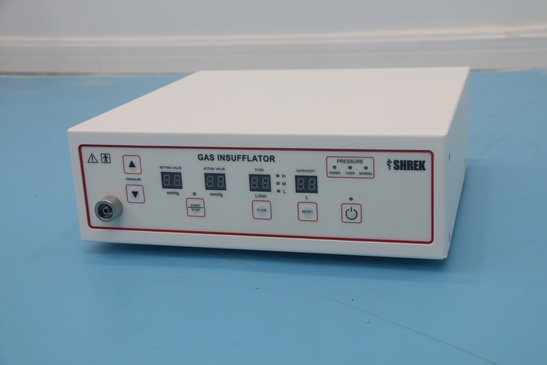CO2 Insufflation in Endoscopy: A Safer and More Effective Alternative
Endoscopy is a minimally invasive diagnostic and therapeutic procedure used to examine the internal organs and cavities of the body. During endoscopy, it is often necessary to insufflate or inflate the organ or cavity being examined with gas to improve visibility and access to the area of interest. Traditionally, room air was used for insufflation. However, the use of carbon dioxide (CO2) as an insufflation gas has become increasingly popular due to its many advantages over room air.

CO2 is a colorless, odorless, and non-flammable gas that is readily available, inexpensive, and non-toxic. It is also rapidly absorbed by the body and eliminated through respiration, making it safer than room air, which can accumulate in the body and cause adverse effects such as pneumothorax and subcutaneous emphysema. CO2 insufflation also leads to a lower incidence of postoperative pain, reduced recovery time, and fewer complications compared to room air insufflation.
In addition to its safety advantages, CO2 insufflation offers several benefits to the endoscopist. It provides better visualization and facilitates access to the target area, allowing for more accurate and efficient procedures. It also reduces the risk of bleeding and tissue damage during the procedure due to its lower pressure and more controlled flow compared to room air.
CO2 insufflation is particularly useful in procedures such as colonoscopy, laparoscopy, and thoracoscopy. In colonoscopy, CO2 insufflation has been shown to reduce postoperative pain, abdominal distension, and recovery time compared to room air insufflation. In laparoscopy, CO2 insufflation is essential for maintaining the pneumoperitoneum required for the procedure. In thoracoscopy, CO2 insufflation improves visibility and reduces the risk of damage to the pleura.
Despite its many benefits, CO2 insufflation is not without its limitations. It can cause discomfort to the patient due to abdominal distension, and in some cases, it can lead to hypercarbia, acidosis, and hemodynamic changes. However, these side effects can be minimized by proper patient monitoring, careful selection of insufflation pressure and flow rate, and appropriate use of sedation and analgesia.
In conclusion, CO2 insufflation is a safer and more effective alternative to room air insufflation in endoscopy. Its many advantages, including improved visibility, reduced tissue damage, and faster recovery time, make it an important tool in the endoscopist's arsenal. With proper patient monitoring and careful attention to insufflation pressure and flow rate, CO2 insufflation can help improve the safety and efficacy of endoscopic procedures.



Leave a message